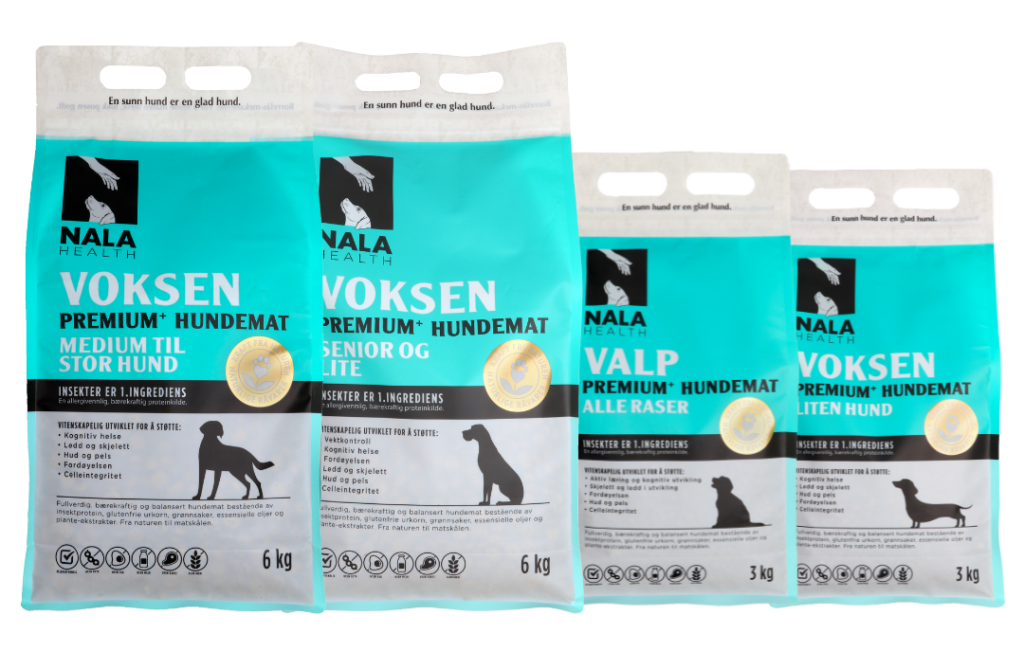How cold impacts dogs
 Synne Hemsen Berg
Synne Hemsen Berg
As winter arrives, it brings along colder temperatures that can have a significant impact on our furry friends. Dogs, just like humans, are affected by the changing weather conditions, and pet owners must understand how colder temperatures can impact their beloved companions.
Physical Impact of Cold Weather
Dogs have their own built-in mechanisms to cope with colder temperatures, but winter temperatures can pose challenges. Especially puppies, small dogs, seniors or sick dogs will not feel well when the mercury drops. Dogs with shorter coats or those not suited to cold climates, such as small and toy breeds, are also particularly vulnerable. Cold weather can lead to a range of physiological changes in dogs, including:
Dry Skin and Coat
Cold weather, combined with dry indoor heat, can cause dogs to experience dry, itchy skin and a dull coat. This can lead to discomfort and increased shedding. Here are some tips to combat dry skin in dogs during the winter:

1. Maintain Proper Hydration: Just like humans, a dog’s skin health is affected by their hydration levels. Ensuring your dog has access to clean, fresh water at all times can help keep their skin hydrated from the inside out.
2. Feed a Balanced Diet: A balanced diet rich in omega-3 and omega-6 fatty acids can help promote healthy skin and coat. Nala Health dog food contains omega 3 and 6 from: insect protein, marine algae, cold pressed canola oil and coconut oil.

3. Use a Humidifier: Indoor heating systems can dry out the air in your home, leading to dry skin for both you and your pet. Using a humidifier can help add moisture back into the air, helping to keep your dog’s skin from drying out.


4. Limit Bath Time: Too many baths can strip the natural oils from your dog’s skin, leading to dryness. Try to limit baths during winter months and always use a dog-appropriate, moisturizing shampoo.
5. Use Moisturizing Products: Special dog-approved moisturizing products, such as balms and creams, can be used on particularly dry or rough spots on your dog’s skin. Be sure to avoid human lotions, as they may contain ingredients that are harmful to dogs. Only use shampoo formulated for use on dogs, because their skin has a different thickness and pH (acidity) than human skin. Human shampoo, including baby shampoo, is far too harsh for their skin.
6. Brush Regularly: Regular brushing not only gets rid of dead hair but also stimulates blood flow, which can improve skin health. It also distributes the natural oils on the skin, promoting healthier and shinier fur.
Joint Pain
Cold weather can exacerbate joint pain, particularly in older dogs or dogs with arthritis. The drop in temperature can lead to stiffening of joints, making movements uncomfortable. If your dog suffers from sore joints, make sure you adjust their exercise to your dog’s ability and do some warm-up exercise before walks. Provide your furry companion with a clean, warm blanket – and if it is very cold, a hot water bottle.
Feeding a diet that supports joint health can help with mobility and pain. Nala Health dog food contains omega-3 from marine algae, which, can help reduce inflammation in the joints. Omega-3 can also aid with joint flexibility and mobility.
Calcium is added to maintain strong bones, and phosphorus works in tandem with calcium to regulate bone mineralization. Together, they help provide the structural framework necessary for optimal joint function. Additionally, vitamin D aids in the absorption of calcium and phosphorus, ensuring that these minerals are properly utilized by the body.



Supplements such as glucosamine and chondroitin are commonly used to support joint health and mobility. Bone broth is a natural elixir for joint health in dogs, as it contains collagen, gelatin, and amino acids that support cartilage repair and reduce joint inflammation. Its nutrient-rich composition nourishes the joints, promoting improved mobility and comfort for your furry friend. Make sure the bone broth is free from salt and onion.
Hypothermia
Just like humans, dogs can suffer from hypothermia if exposed to cold winter temperatures. The specific temperature at which a dog can develop hypothermia varies depending on several factors, including breed, size, coat type, age, and overall health. However, as a general guideline, most dogs are susceptible to hypothermia when exposed to temperatures below 0°C, which some areas of South Africa experience in winter, especially at night.
Smaller dog breeds, short-haired or single-coated dogs, puppies, older dogs, and those with certain medical conditions are more vulnerable to the cold and develop hypothermia at relatively higher temperatures. Additionally, factors such as wind chill, wetness, and duration of exposure can further increase the risk.


It’s crucial to note that individual dogs have different tolerance levels, and some breeds are better adapted to colder climates than others. If you suspect your dog may be experiencing hypothermia or prolonged exposure to cold temperatures, it’s important to seek veterinary assistance promptly. Some signs your dog has been exposed to the cold for too long include:
- Shivering: Dogs may shiver or tremble as their body attempts to generate heat.
- Cold ears and extremities: The ears, paws, and tail may feel cold to the touch.
- Pale or blue-tinged gums: Hypothermia can cause a decrease in blood circulation, resulting in pale or bluish gums.
- Slowed or shallow breathing: The dog’s breathing may become slow or shallow.
- Lethargy and weakness: Dogs with hypothermia may appear tired, weak, or unresponsive.
- Decreased heart rate: The heart rate may slow down as a response to the cold.
- Stiff muscles: Dogs may have stiff or rigid muscles due to decreased blood flow.
- Loss of coordination: They may exhibit stumbling, lack of coordination, or difficulty walking.
- Dilated pupils: The dog’s pupils may appear larger than usual.
- Loss of consciousness: In severe cases, dogs may lose consciousness or go into a coma.
We would therefore not advise leaving your dog outside for prolonged periods during the cold winter months.
Behavioural Changes in Cold Weather
Apart from physical impacts, cold weather can also lead to noticeable behavioural changes in your pet.


Reduced Activity
Your dog might become less active and reluctant to go outside during colder months. They may not want to go on walks or play outside, which can result in weight gain due to reduced physical activity. This can be particularly true for small breeds or short-haired breeds that feel the cold more acutely. On the other hand, dog breeds that prefer colder weather like huskies, may increase their activity levels during colder months as cooler temperatures are more bearable.
Changes in Eating Habits
Some dogs may eat more during winter as their bodies work harder to stay warm, while others may lose their appetite. It’s essential to monitor their eating habits and adjust their diet as necessary.
Mood changes
Your dog’s mood may change during colder months. Dogs with arthritis or other joint issues may experience increased discomfort and pain during cold weather, which can lead to changes in their mood. Reduced exercise can also lead to frustration, hyperactivity and destructive behaviour as your dog does not appropriately release their energy.
Protecting Dogs in Cold Weather
To ensure our furry friends stay safe and comfortable during colder temperatures, it’s important to take certain precautions:
Dress Appropriately
For dogs that are sensitive to the cold or have short fur, consider using dog sweaters and coats to provide additional warmth and protection. This also helps prevent the skin from drying out.


Limit Exposure
Minimize time spent outside in extremely cold weather, especially during severe weather conditions. Shorter walks and outdoor activities can help prevent overexposure.
- Create a Warm Indoor Environment: Keep your home warm and provide your dog with cozy bedding away from drafts. Provide extra blankets or heated pads for older dogs or those with joint issues.
- Hydration and Nutrition: Adequate hydration and nutrition are vital during the winter months. Ensure your dog has access to fresh water and provide a balanced diet to support their immune system and overall health. During cold months, it may be nice to add some warm bone broth to their food both for joint support and to make their meal extra cozy.
Exercise and Mental Stimulation
Cold weather should not hinder your dog’s exercise routine and mental stimulation. Although outdoor activities may be limited, there are still ways to keep them active and engaged indoors:
- Indoor Playtime: Engage in interactive indoor games, such as hide-and-seek or puzzle toys, to provide mental stimulation and burn off energy.
- Indoor Training: Use the colder months as an opportunity to focus on obedience training and teaching new tricks indoors. This mental stimulation can help keep your dog sharp and engaged.
It is our duty to ensure our dogs are safe and healthy throughout the year, including during the colder months. By understanding the physiological impact of cold weather on dogs and taking necessary precautions, we can provide them with the care and protection they need. Remember to monitor your dog’s behaviour and look out for any signs of discomfort or health issues during the winter season. Every dog experiences cold temperatures differently, and what might be fine for one dog could be uncomfortable for another. With proper attention and care, you can enjoy the winter season together.

